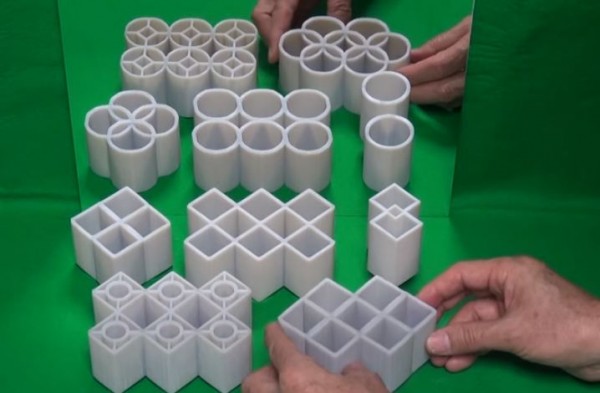Incredible Optical Illusion Proves how Lazy our Minds can be
| Arthur Dominic Villasanta | | Jul 01, 2016 11:58 PM EDT |
(Photo : Kokichi Sugihara) Ambiguous Cylinder Illusion
A viral optical illusion making waves on the internet again proves our brains aren't big enough to grasp physical reality as we perceive it to be.
The illusion was developed by Prof. Kokichi Sugihara, a Doctor of Engineering at the Meiji Institute for Advanced Study of Mathematical Sciences in Japan. It won second place at the annual Best Illusion of the Year contest hosted by the Neural Correlate Society in the United States.
Like Us on Facebook
First place in the Best Illusion of the Year contest went to Mathew Harrison and Gideon Caplovitz of the University of Nevada Reno in the U.S. for their "Motion Integration Unleashed: New Tricks for an Old Dog."
Second place was won by Christine Veras of the Nanyang Technological University, Singapore for her "Silhouette Zoetrope."
In his "Ambiguous Cylinder Illusion," Prof. Sugihara is shown holding various square-shaped objects that become circle-shaped objects when reflected on a mirror. The objects also change shape as they're rotated.
No magic here, just intricate shapes produced by a 3D printer that don't all have straight edges. The objects aren't exactly squares. Some of the sides are slightly rounded while the others are pinched.
The top edge of the squares are serrated. Viewing these shapes that aren't truly square or truly round forces your mind to take a shortcut so it can understand what it sees. The result is you see the squares as circles reflected in the mirror.
An optical illusion fools our minds because it tricks our mind into making sense of something it sees but can quite understand. The result is our mind takes a "shortcut," which is the optical illusion.
We see anything because light bounces off that object and enters our eyes. This image is converted by the brain into electrical signals. This process takes about a tenth of second.
Our eyes, however, sees a lot and it's really tough for our brains to try to focus on everything all at once. To compensate, our brains take shortcuts by simplifying what we see to help us concentrate on what's important. That compensates for our brain's tenth-of-a-second processing lag.
You can view Prof. Sugihara's YouTube video here.
You can also view the explanation as to how one YouTuber did the same thing here.
TagsProf. Kokichi Sugihara, Best Illusion of the Year, Neural Correlate Society
©2015 Chinatopix All rights reserved. Do not reproduce without permission
EDITOR'S PICKS
-

Did the Trump administration just announce plans for a trade war with ‘hostile’ China and Russia?
-

US Senate passes Taiwan travel bill slammed by China
-

As Yan Sihong’s family grieves, here are other Chinese students who went missing abroad. Some have never been found
-

Beijing blasts Western critics who ‘smear China’ with the term sharp power
-

China Envoy Seeks to Defuse Tensions With U.S. as a Trade War Brews
-

Singapore's Deputy PM Provides Bitcoin Vote of Confidence Amid China's Blanket Bans
-

China warns investors over risks in overseas virtual currency trading
-

Chinese government most trustworthy: survey
-

Kashima Antlers On Course For Back-To-Back Titles
MOST POPULAR
LATEST NEWS
Zhou Yongkang: China's Former Security Chief Sentenced to Life in Prison

China's former Chief of the Ministry of Public Security, Zhou Yongkang, has been given a life sentence after he was found guilty of abusing his office, bribery and deliberately ... Full Article
TRENDING STORY

China Pork Prices Expected to Stabilize As The Supplies Recover

Elephone P9000 Smartphone is now on Sale on Amazon India

There's a Big Chance Cliffhangers Won't Still Be Resolved When Grey's Anatomy Season 13 Returns

Supreme Court Ruled on Samsung vs Apple Dispute for Patent Infringement

Microsoft Surface Pro 5 Rumors and Release Date: What is the Latest?












